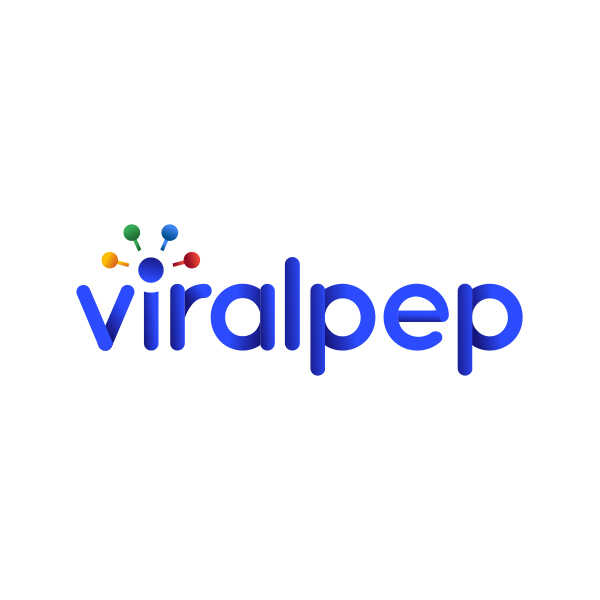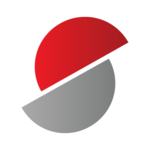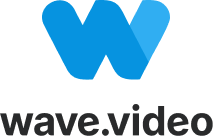Description
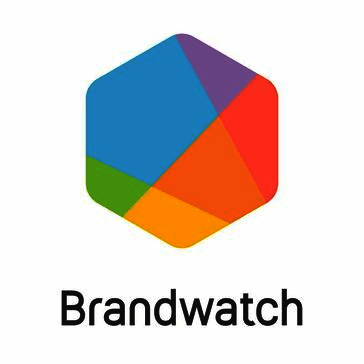
Brandwatch Consumer Intelligence
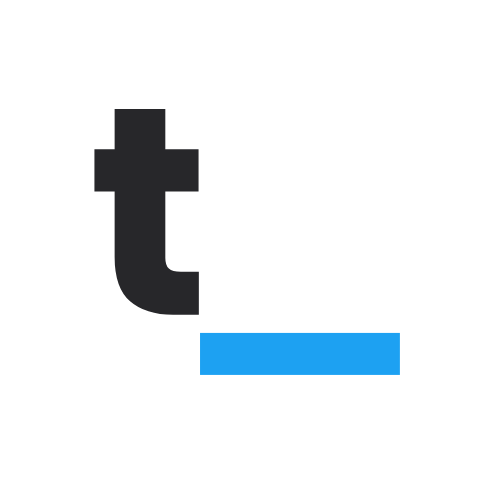
Tweetmonk
Comprehensive Overview: Brandwatch Consumer Intelligence vs Tweetmonk
Brandwatch Consumer Intelligence and Tweetmonk are both tools used for social media and marketing analysis, but they serve somewhat different purposes and audiences. Here's an overview of each:
Brandwatch Consumer Intelligence
a) Primary Functions and Target Markets:
- Primary Functions: Brandwatch Consumer Intelligence is a comprehensive social media analytics platform that provides businesses with tools to track, analyze, and act on social media data. It offers real-time monitoring, sentiment analysis, trend detection, competitive benchmarking, image analysis, and audience insights.
- Target Markets: This tool primarily targets enterprise-level companies and digital marketing agencies that are looking for in-depth insights into consumer opinions and market trends. It is particularly favored by brands that require extensive data analytics capabilities and often have large volumes of social media data to manage.
b) Market Share and User Base:
- Brandwatch has positioned itself as a leader in the social media analytics space, often appealing to large organizations and brands due to its robust feature set and the depth of insights it provides. The exact market share may vary, but it is considered one of the top-tier platforms in its domain. Its user base includes major global brands across various industries.
c) Key Differentiating Factors:
- Comprehensive Data Coverage: Brandwatch offers one of the most extensive ranges of data sources, covering not just Twitter and Facebook, but also other social media platforms, blogs, forums, and news sites.
- Advanced Analytics Tools: It provides advanced analytics and reporting tools, helping users to gain deep insights into consumer behavior and market trends.
- Integration Capabilities: Brandwatch has strong integration capabilities with other marketing tools and platforms, allowing seamless data flow and syncing across systems.
Tweetmonk
a) Primary Functions and Target Markets:
- Primary Functions: Tweetmonk is designed primarily for Twitter analytics and management. It offers functionality for scheduling tweets, analyzing engagement metrics, and understanding audience demographics and behaviors.
- Target Markets: The tool is aimed more at small to medium-sized businesses, social media managers, and individual content creators who focus heavily on Twitter as a platform.
b) Market Share and User Base:
- Tweetmonk operates in a niche market focusing on Twitter, and while it is not as widely recognized as Brandwatch in the broader social media analytics field, it has garnered a dedicated user base that prioritizes Twitter. Its user base is growing but is not as extensive as larger, multi-platform tools.
c) Key Differentiating Factors:
- Twitter-Specific Tools: Unlike multi-platform tools like Brandwatch, Tweetmonk specializes in Twitter analytics, which allows for more detailed insights and optimizations specifically tailored for tweeting and audience engagement on Twitter.
- Simplicity and Ease of Use: It is often preferred for its ease of use, making it accessible for businesses and individuals who need effective Twitter strategies without the complexity of larger tools.
- Cost-Effectiveness: Tweetmonk typically offers more affordable pricing plans, making it accessible to smaller businesses and individual users who might find enterprise-grade solutions like Brandwatch too costly.
Comparison Summary
- Scope of Functionality: Brandwatch offers a broader scope with multi-platform analytics, while Tweetmonk excels in specialized Twitter management.
- Target Audience: Brandwatch targets large enterprises requiring wide-ranging analytics, whereas Tweetmonk is aimed at smaller businesses and individuals focused on Twitter.
- Market Position: Brandwatch is among the leaders in social media analytics by market share, while Tweetmonk holds a niche position primarily among Twitter users.
Both tools bring value to their respective users, but the choice between them typically depends on the specific needs of the user, including the scope of social media platforms they focus on and their budget for analytics tools.
Contact Info

Year founded :
Not Available
Not Available
Not Available
Not Available
Not Available

Year founded :
2022
Not Available
Not Available
India
http://www.linkedin.com/company/tweetmonk
Feature Similarity Breakdown: Brandwatch Consumer Intelligence, Tweetmonk
To provide a meaningful comparison of Brandwatch Consumer Intelligence and Tweetmonk, let's break down the core features, user interface differences, and unique aspects that differentiate these products.
a) Core Features in Common
-
Social Media Monitoring: Both Brandwatch Consumer Intelligence and Tweetmonk offer robust social media monitoring capabilities. They help track brand mentions and relevant conversations across various social platforms.
-
Analytics and Reporting: Each platform provides analytics and reporting tools to measure engagement, sentiment, and other relevant social media metrics.
-
Data Visualization: They both offer data visualization tools to help users interpret social media data through charts, graphs, and dashboards.
-
Competitor Analysis: Both platforms allow users to conduct competitor analysis to understand market positioning and share of voice.
-
Sentiment Analysis: Automatic sentiment analysis to gauge public opinion is a common feature, allowing users to see whether brand sentiment is positive, negative, or neutral.
b) User Interface Comparison
-
Brandwatch Consumer Intelligence:
- The interface is typically more tailored towards enterprise-level users and provides a comprehensive dashboard with a wide range of social analytics features.
- It offers customizable widgets and reports which can be complex but are very powerful for deep analysis.
- The navigation is designed to support extensive data mining and insights discovery, with tools for diving deep into datasets.
-
Tweetmonk:
- The user interface of Tweetmonk is often streamlined with a focus on simplicity and ease of use, targeting individuals and smaller teams.
- It has a more straightforward, lightweight design that usually appeals to those who want quick insights without a steep learning curve.
- The interface is less complex, aiming for rapid access to key functionalities like scheduling and monitoring within Twitter primarily.
c) Unique Features
-
Brandwatch Consumer Intelligence:
- Customizable Data Retrieval: Offers extensive custom data retrieval options to derive insights from a broad range of internet sources, not just social media.
- Advanced AI and Machine Learning Tools: Features like topic clustering and trend analysis using advanced AI can give deeper strategic insights.
- Integration with Large Datasets: Powerful integrations with other enterprise tools like CRM systems and the ability to handle extensive datasets.
-
Tweetmonk:
- Focus on Twitter Management: Specializes heavily in managing Twitter accounts, offering tools specifically for Twitter growth hacking and community building.
- Content Scheduling: Provides advanced scheduling options designed to maximize the impact of Twitter posts, including best-time-to-post analytics.
- Thread Engagement: Tools and analytics specifically designed to optimize and manage Twitter threads, an important feature for content creators on Twitter.
In conclusion, both tools offer robust features for social media intelligence but are tailored to different user needs and scales. Brandwatch aims to serve enterprise users with vast datasets and sophisticated analysis, while Tweetmonk provides targeted tools for Twitter engagement and management, ideal for individual users and small teams.
Features

Consumer Insights
Influencer Identification
Social Media Monitoring
Competitive Benchmarking
Data Visualization
Social Media Analytics
Trend Insights
Competitive Analysis
Reporting and Dashboards

Analytics and Insights
Content Creation
Content Scheduling
Best Fit Use Cases: Brandwatch Consumer Intelligence, Tweetmonk
Brandwatch Consumer Intelligence:
a) Best Fit Use Cases:
-
Large Enterprises and Corporates: Brandwatch Consumer Intelligence is well-suited for large enterprises and corporations that require in-depth social media analytics and consumer insights. This is because these organizations often have a vast amount of data spread across different platforms that need to be monitored and analyzed comprehensively.
-
Marketing Agencies: Agencies tasked with managing multiple brands' reputations and digital presence benefit significantly due to the platform's ability to handle complex data, provide detailed consumer insights, and manage multiple campaigns simultaneously.
-
Brands with a Global Presence: Companies with extensive geographical reach can take advantage of Brandwatch’s capabilities to monitor and analyze consumer sentiments and trends across different regions globally.
-
Market Research Firms: Firms involved in deep consumer research and competitive analysis find Brandwatch useful for extracting actionable insights from social media and online forums.
b) How it Caters to Different Industry Verticals and Company Sizes:
-
Industry Verticals: Brandwatch is particularly beneficial for industries such as FMCG, technology, health care, and retail. These sectors often need to track consumer behavior and brand perception in real time.
-
Company Size: Primarily targets medium to large organizations due to its robust analytical capabilities and the need for a higher budget investment, which suits enterprises with larger marketing budgets.
Tweetmonk:
a) Best Fit Use Cases:
-
Small to Medium Businesses (SMBs): Tweetmonk is a good match for SMBs seeking efficient Twitter management tools that are budget-friendly yet packed with essential features like scheduling, analytics, and audience engagement.
-
Social Media Managers and Influencers: Individuals and small teams that focus primarily on Twitter can leverage Tweetmonk for its user-friendly interface and scheduling capabilities to maintain a consistent posting schedule.
-
Content Creators and Bloggers: Tweetmonk can greatly assist content creators in expanding their reach on Twitter by optimizing posting strategies and analyzing audience engagement.
-
Startups: Startups looking for cost-effective solutions to establish and manage their Twitter accounts find Tweetmonk useful due to its simplicity and focus on one platform.
b) Scenarios Where Tweetmonk is Preferred:
-
Direct Engagement Focus: When the focus is primarily on Twitter and engaging directly with followers, Tweetmonk’s platform is optimized for these interactions.
-
Limited Budget Constraints: In cases where businesses have a limited social media budget but still need effective tools, Tweetmonk’s affordability makes it the preferred option.
d) Catering to Industry Verticals and Company Sizes:
-
Industry Verticals: Tweetmonk is more flexible and can be adapted across various industries like personal brands, education, SaaS startups, and hospitality that focus heavily on Twitter for customer interactions and branding.
-
Company Size: Targeted mainly at small to medium-sized businesses and individual users due to its affordability and ease of use, allowing them to manage Twitter efficiently without needing complex features across multiple social channels.
Together, these tools provide different levels of social media management and analytics, allowing businesses to choose based on their specific needs, whether focusing on in-depth consumer intelligence across platforms or streamlined Twitter engagement.
Pricing

Pricing Not Available

Pricing Not Available
Metrics History
Metrics History
Comparing undefined across companies
Conclusion & Final Verdict: Brandwatch Consumer Intelligence vs Tweetmonk
Conclusion and Final Verdict on Brandwatch Consumer Intelligence vs Tweetmonk
a) Best Overall Value
Brandwatch Consumer Intelligence tends to offer the best overall value for businesses needing comprehensive insights into consumer behavior and market trends. Its robust analytics, extensive data coverage, and integration capabilities make it a powerful tool for large organizations that require deep, actionable insights.
b) Pros and Cons
Brandwatch Consumer Intelligence:
-
Pros:
- Comprehensive Data Analysis: Offers an extensive array of tools for deep-dive analysis into consumer sentiment, trends, and behaviors across multiple platforms.
- Integration Capability: Easily integrates with other marketing and data management systems, enhancing its utility within larger tech stacks.
- Customizable Dashboards and Reports: Allows for advanced customization, enabling users to tailor insights to specific business needs.
-
Cons:
- Cost: Typically more expensive, making it less accessible for smaller businesses or those with limited budgets.
- Complexity: The platform's wide array of features can be overwhelming and may require a significant learning curve for less experienced users.
Tweetmonk:
-
Pros:
- Affordability: More budget-friendly, which can be appealing to smaller businesses or startups looking for social media-specific insights.
- Ease of Use: Simpler interface and easier to navigate, making it accessible for users without extensive technical expertise.
- Focused Features: Offers specialized tools for optimizing and analyzing Twitter campaigns, particularly useful for targeted social media marketing.
-
Cons:
- Limited Scope: Primarily focused on Twitter, which might not satisfy businesses needing insights across a broader range of platforms and data types.
- Less In-depth: Does not provide the same level of advanced analytical features as Brandwatch, potentially limiting the depth of insights drawn.
c) Specific Recommendations
For Users Deciding Between Brandwatch Consumer Intelligence and Tweetmonk:
-
Business Size and Needs: If you are a larger company with complex data analysis needs and a budget to match, Brandwatch Consumer Intelligence will likely serve you better with its comprehensive analytics and integration capabilities. However, for small-to-medium businesses or those primarily focused on optimizing Twitter presence, Tweetmonk offers an affordable, user-friendly option.
-
Budget Considerations: Consider your budget carefully. Brandwatch represents a significant investment, which may pay off if its wide range of capabilities align with your strategic goals. Alternatively, if your needs are simpler and cost is a major factor, Tweetmonk could be the right choice.
-
Platform Focus: If your marketing efforts are heavily concentrated on Twitter, Tweetmonk’s specialized tools might provide more targeted benefits. Conversely, if multi-platform analysis and broader consumer insights are critical for your business, Brandwatch’s capabilities will be more beneficial.
In summary, both tools have their distinct advantages and potential drawbacks. Your ultimate choice should align with your business objectives, the depth of insights required, and the budget available.
Add to compare
Add similar companies
